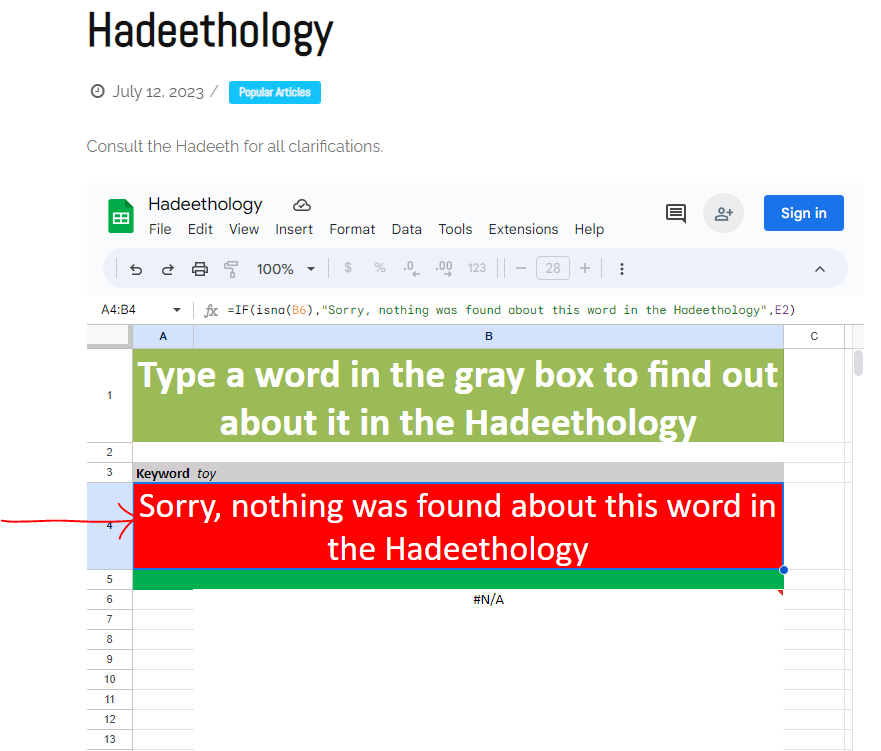Introduction:
Hadeethology is the field of study that focuses on the science of Hadeeth, which refers to the sayings, actions, and approvals of Prophet Muhammad (peace be upon him). It plays a crucial role in understanding Islamic teachings and practices. This guide aims to provide a step-by-step approach to using hadeethology effectively.
1. Familiarize Yourself with Hadeethology:
Before delving into the practical aspects, it is essential to have a basic understanding of hadeethology. Learn about the different categories of hadeeths, the methodology used to authenticate them, and the significance of grading in determining their authenticity.
2. Identify Reliable Hadeeth Collections:
Numerous collections of hadeeths exist, but not all are equally reliable. Begin by identifying well-known and authentic collections such as Sahih al-Bukhari, Sahih Muslim, Jami` at-Tirmidhi, Sunan Abu Dawood, and Sunan Ibn Majah. These collections have undergone rigorous scrutiny by scholars, ensuring the authenticity of the included hadeeths.
3. Study the Chains of Narration:
Hadeeths are transmitted through chains of narration, also known as Isnads. Each chain consists of a series of narrators who have transmitted the hadeeth. Pay close attention to the biographies of these narrators to assess their credibility and reliability. This process, known as studying the science of narrators (ilm al-rijal), is fundamental in hadeethology.
4. Understand the Grading of Hadeeths:
Scholars grade hadeeths based on their authenticity. Familiarize yourself with the grading system, which includes classifications such as Sahih (authentic), Hasan (good), Da’if (weak), and Mawdu’ (fabricated). This knowledge will help you differentiate between reliable and unreliable hadeeths.
5. Utilize Hadeeth Commentaries:
Commentaries on hadeeth collections provide valuable insights into the meanings, context, and interpretations of individual hadeeths. These commentaries, written by scholars throughout history, serve as a comprehensive resource for understanding the depth and nuances of specific hadeeths.
6. Seek Guidance from Scholars:
Hadeethology is a complex field, and seeking guidance from knowledgeable scholars is highly recommended. Attend lectures, seminars, or workshops conducted by experts in the field. Engage in discussions to clarify any doubts or misconceptions you may have.
7. Apply Hadeethology in Practice:
Once you have gained a sufficient understanding of hadeethology, you can apply it to various aspects of your life. Use authentic hadeeths as a source of guidance in matters of worship, ethics, family, social interactions, and personal development. By incorporating the teachings of the Prophet (peace be upon him) into your daily life, you can strive to follow the path of righteousness.
Conclusion:
Hadeethology is a valuable discipline that allows us to access the teachings and wisdom of the Prophet Muhammad (peace be upon him). By following the steps outlined in this guide, you can navigate the world of hadeeths with confidence, ensuring that you rely on authentic sources and apply them appropriately in your life. Remember to continually seek knowledge, consult scholars, and approach hadeethology with sincerity and reverence.
Follow the steps to use the hadeethology
Step 1
Upon clicking the title Hadeethology, this page will pop-up with an excelsheet (which is protected except in some specific cells).

Step 2

In order to find out about a specific word or phrase, you must type it in the gray box. It is the only editable cell in the sheet.
Step 3
After you have typed in the desired word or phrase about which you wish to find out what has been recorded in the Hadeethology, the relevant hadeeths will show in the cell under the green cell, and following this all the related, and similar hadeeths will be listed.
For understanding them, it is recommended that you read our disclaimer in advance, and follow the suggested steps.

Step 4

In the instance of a word of phrase about which nothing is found in the Hadeethology, an apology will be shown in red background. This means either the word is wrongly spelled or about it nothing was ever recorded.
